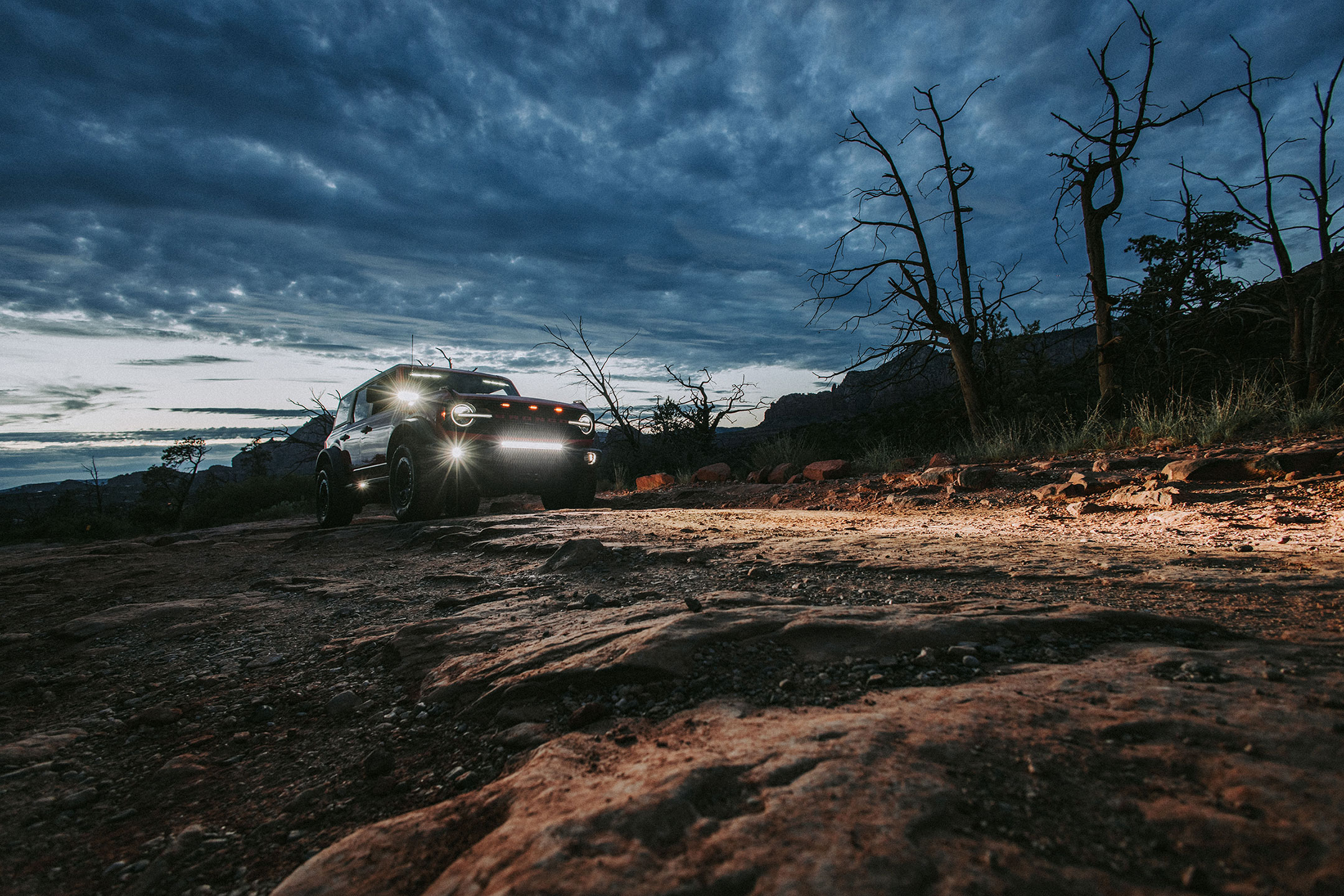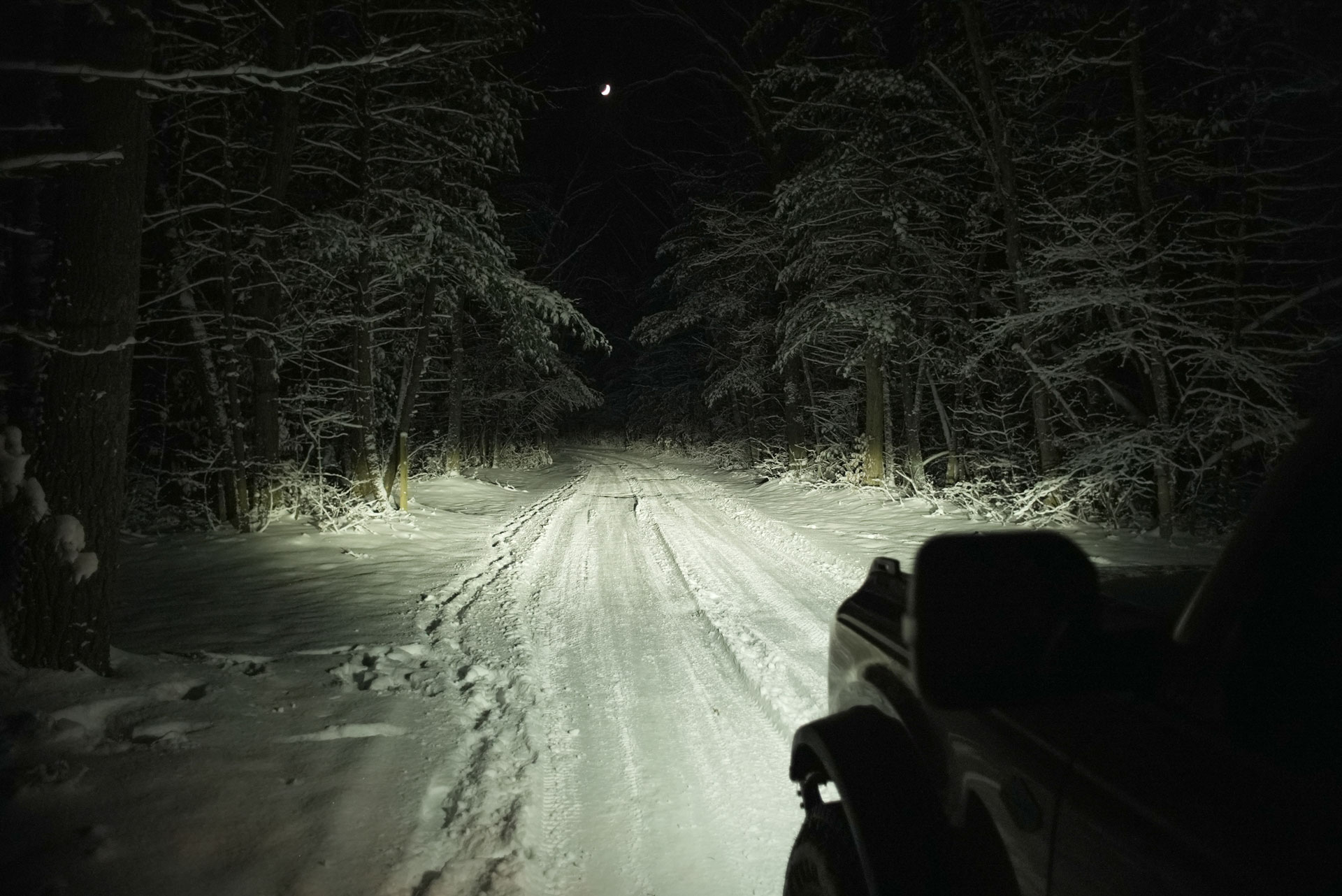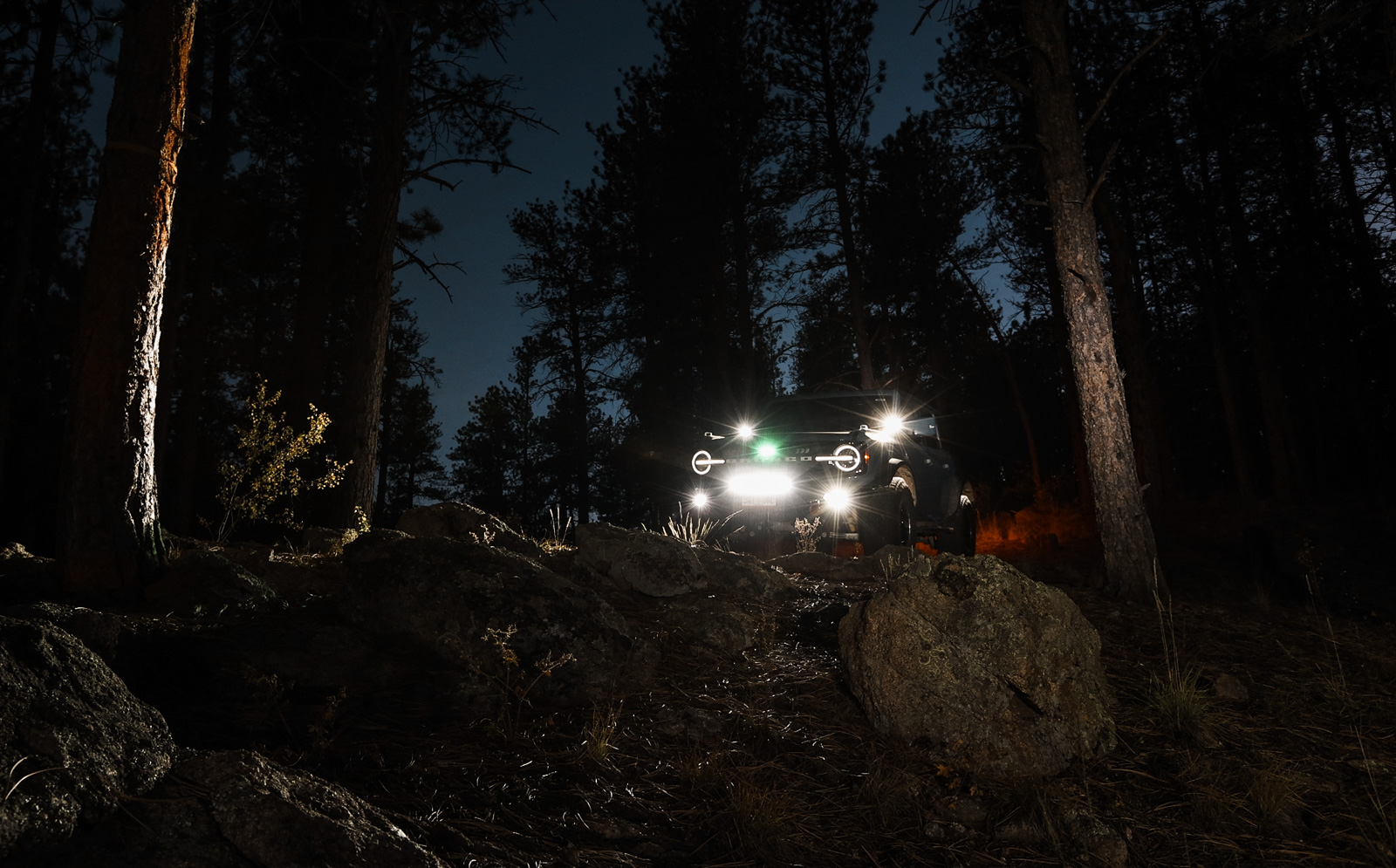5 ways to cut through lingo and make sense of specs when shopping for off-road vehicle lighting
Have you ever been confused when shopping for lights and looking over the specifications? Ever wondered “are lights with more lumens better”? Well, you’re not alone. It can be hard to sort everything out, especially since there is such a specialized vocabulary in lighting. There’s also misleading or incomplete information out there. We hope this guide helps you to make an educated purchase.
For the remainder of this article, we will be referring to the lights as lamps so that we can provide accurate information. Light is the natural agent that stimulates sight and makes things visible. Whereas a lamp is a device that emits light.
Defining the basic terms
Raw lumens, otherwise known as total available light, indicates the complete light output radiated from the LEDs. In other words, it’s the raw potential of the lamp. However, it does not take into account the design or engineering of the lamp such as the shape, reflectors used, lens material, optic design, etc.
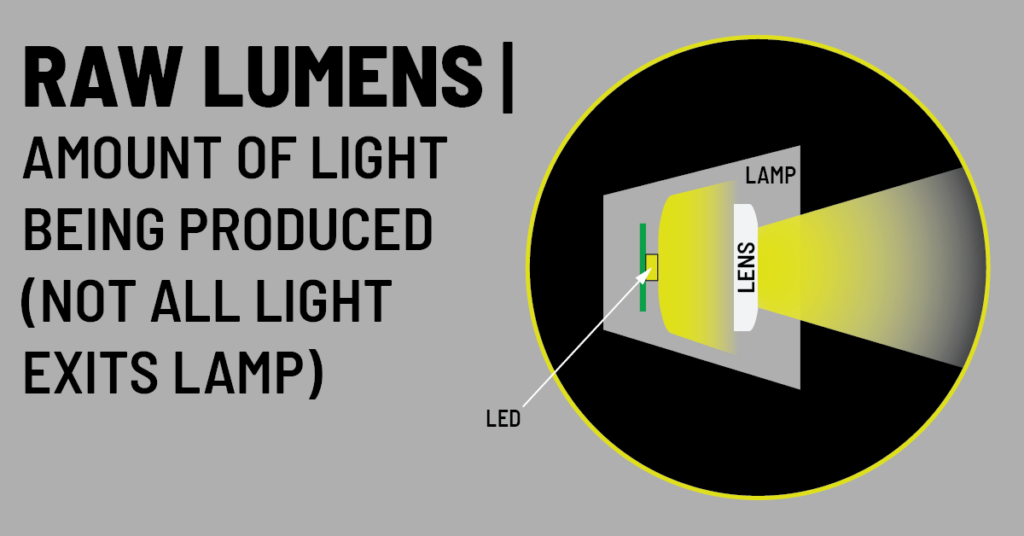
Lux, otherwise known as light at a distance, really gets to the point of what an illumination lamp is all about. Lux describes the amount of light on a surface at a specified distance. The closer to the lamp, the higher the lux values, and further away you get the lower the lux values. But what’s important to remember when you’re shopping and considering lux numbers is beam pattern and what you’re trying to illuminate. If you’re looking for a flood lamp, your lux numbers may be lower compared to the numbers you will see with spot lamps, since spot lamps concentrate light to a smaller surface area.
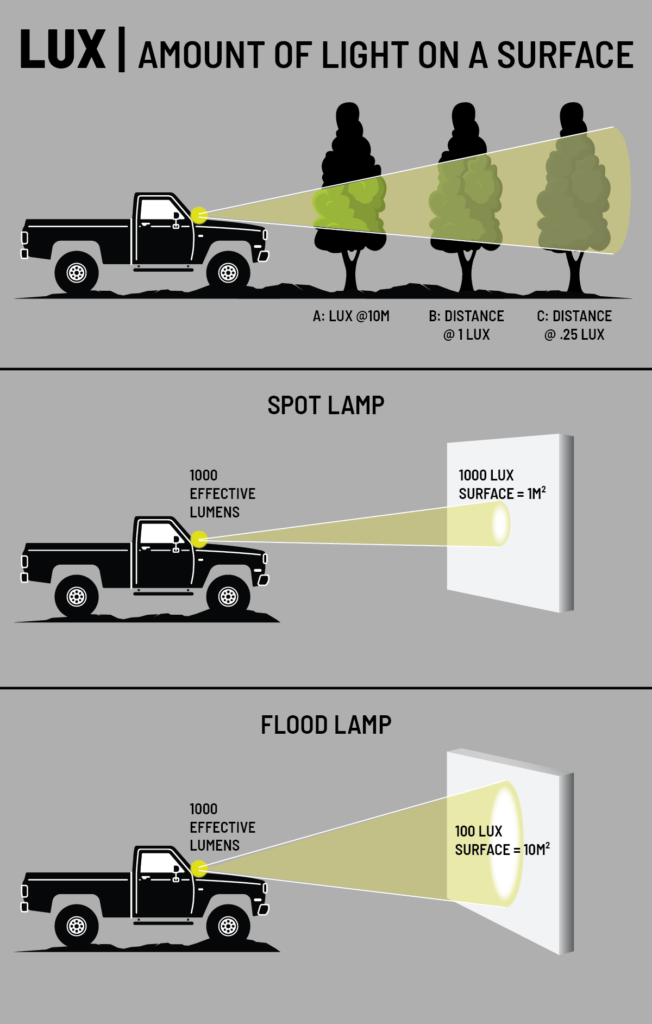
Understanding how we measure lux
In the lighting industry, ABC measurements are used to describe the performance of a lamp.
A. Lux @ 10 meters is used to tell you how bright objects would look 10 meters away from the front of the lamp. The higher the number, the brighter the object.
B. Meters @ 1 Lux measures the distance from the lamp to an object when you have 1 Lux of light bouncing back from the object. So, this tells you how far away a person would be from the lamp when they have 1 Lux of light (which is about the minimum amount of light to read a newspaper). To a driver of a vehicle, the person bouncing back 1 Lux of light would be highly visible.
C. Meters @ .25 Lux is a standard like B., but now the distance away from the lamp is when the driver is just able to make out the person or object. They begin to appear as the light bouncing back is visible. However, the person at that distance would not have enough light to read a newspaper.
Wondering if big lumen numbers mean a great lamp? It depends
So, as you can see, raw lumens are not always beneficial to you when you’re trying to decide which lamp is most effective. When raw lumens are used as the “scale” of how bright a lamp is, it is often a poor indicator to actual performance.
In fact, if a lamp has high raw lumens and low A,B,C numbers, may be an inefficient lamp or it could indicate an unfocused light. The goal of a good design is to have the lowest raw lumens with the highest A,B,C numbers. So, judge the lamp by the output, not the input!
Let’s now see how this information applies to two mpower® products:
mpower® ORV 12” Lightbar
Designed with a hybrid 10° spot/flood beam pattern for optimal illumination on all your outdoor adventures.
| LED Color | Raw Lumens | Lux @ 10m | Beam Distance @ 1 Lux | Beam Distance at .25 Lux |
| White | 8,292 | 1,190 | 345 meters | 690 meters |
Since this is a spot lamp that concentrates the lumens into a smaller area, you’ll see that the lux @ 10 m is a very high number, and the distance that the beam travels is extensive. Here, lux is the better measurement in terms of telling you about performance, because they convey concentrated light at distance. Raw lumens tell the story of the power of the individual LED inside the lamp. 12 LEDs creates 8,292 lumens, or about 683 lumens each.
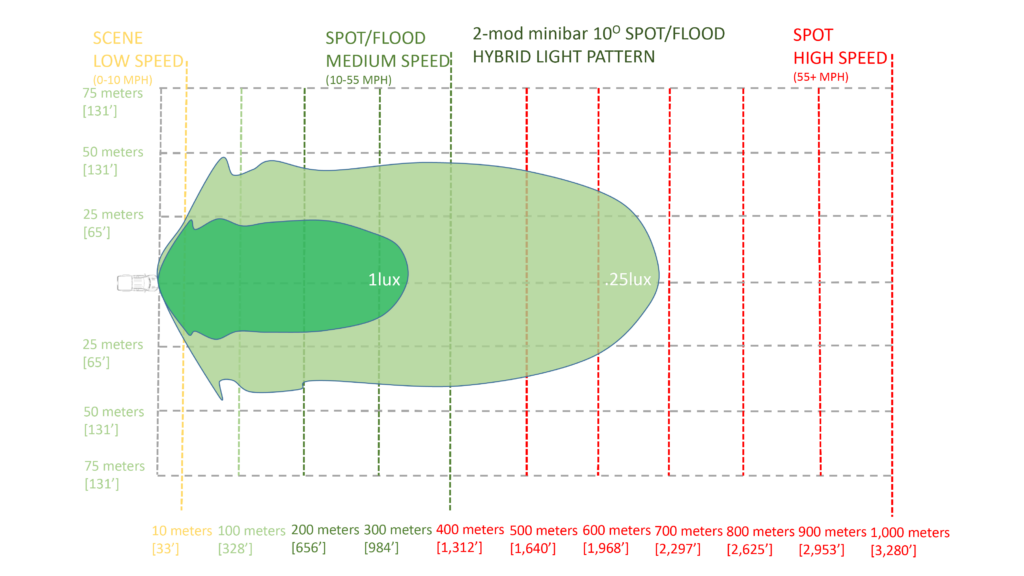
mpower® ORV Chase Light Kit
Offers both a white cargo illuminating lamp and a dust cutting amber lamp and can be set to steady burn or flashing.
| LED Color | Raw Lumens | Lux @ 10m | Beam Distance @ 1 Lux | Beam Distance at .25 Lux |
| White | 2,832 | 64.48 | 80 meters | 160 meters |
| Amber | 2,160 | 37.84 | 61 meters | 123 meters |
Per kit assembly (two lights)
Notice that compared to the spot lamp, this lamp has lower A,B,C numbers. But it’s important to consider that this is a warning lamp, so the light is being dispersed onto a much broader space to be able to be seen from many angles. These lamps can also dual purpose as near field flood lamps to concentrate on illuminating the space closer to your vehicle, which explains why the beam distances are shorter here than with the lightbar.
With a flood lamp, it is important to look at the ISO-plot or bird’s eye view of the light showing the amount of lux in the area around the vehicle.
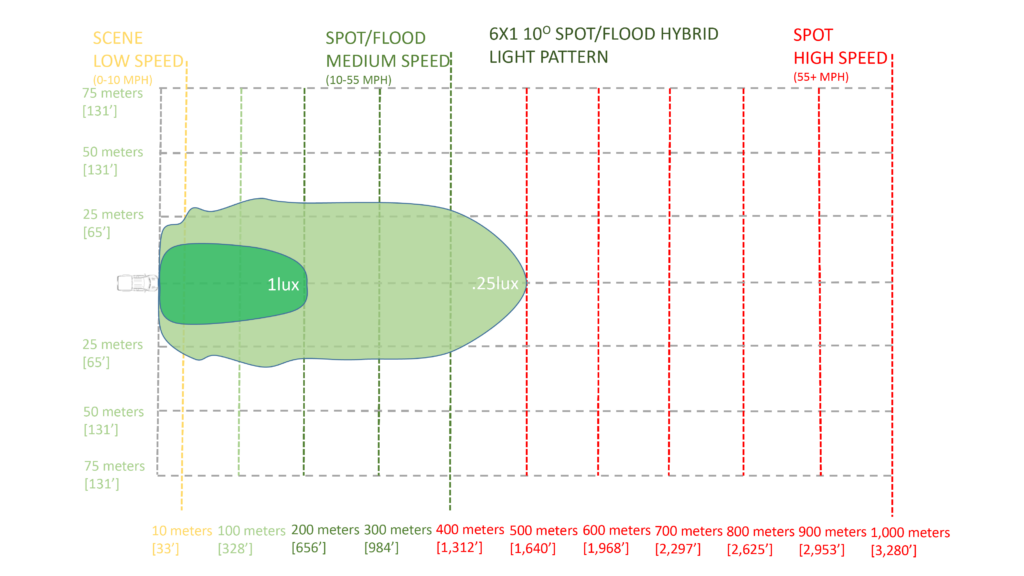
Example of an ISO-plot chart for our mpower® 6×1 Light
You might also see candela mentioned when you shop, which is the amount of light in a certain beam angle or direction. Candela is used primarily for warning lamps, chase lamps, and taillamps since the light needs to be observed in particular directions.
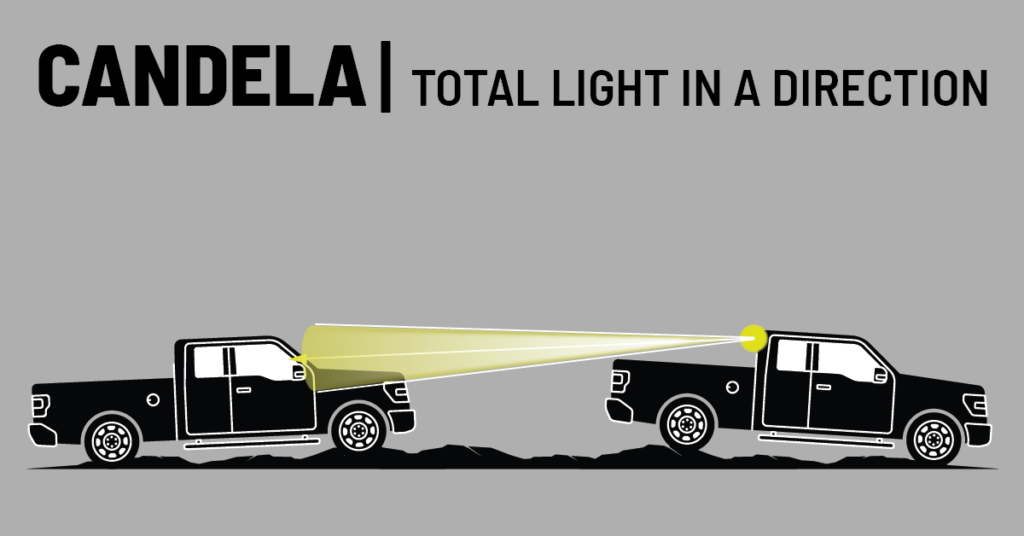
Getting to the bottom line: five ways to approach shopping for lights for your off-road vehicle
- All that said about lux, lumens and candela – no single measurement is the “be all, end all” when it comes to light measurement. It is important to consider all these measurements plus beam pattern and design.
- In addition to light output, you should also consider mount options, installation ease, functionality, durability, price and more when you are shopping for the right product.
- Knowledge of “how it works” vs. saying “it’s brighter” empowers you as a buyer!
- In the end – perceived brightness probably matters more than everything else—turn the light on and show it off!
- Last but not least, check out what lights mpower has to offer!
Articles You Might Like
-
March 31, 2025
Bronco Owners, Level Up!
Introducing the Dual-Color Interior Lightbar that Transforms Your Rig -
December 16, 2024
Illuminating the Bright Ideas Shaping the Next Generation of Off-Road Lighting
Illuminate your off-road adventures with mpower
There are no street lights where you’re headed. That’s the way you like it. But whether you’re headed up the side of a mountain, getting down and dirty in a mud bog, or racing across snow-covered fields, you’d better have a clear view of whatever lies ahead.
